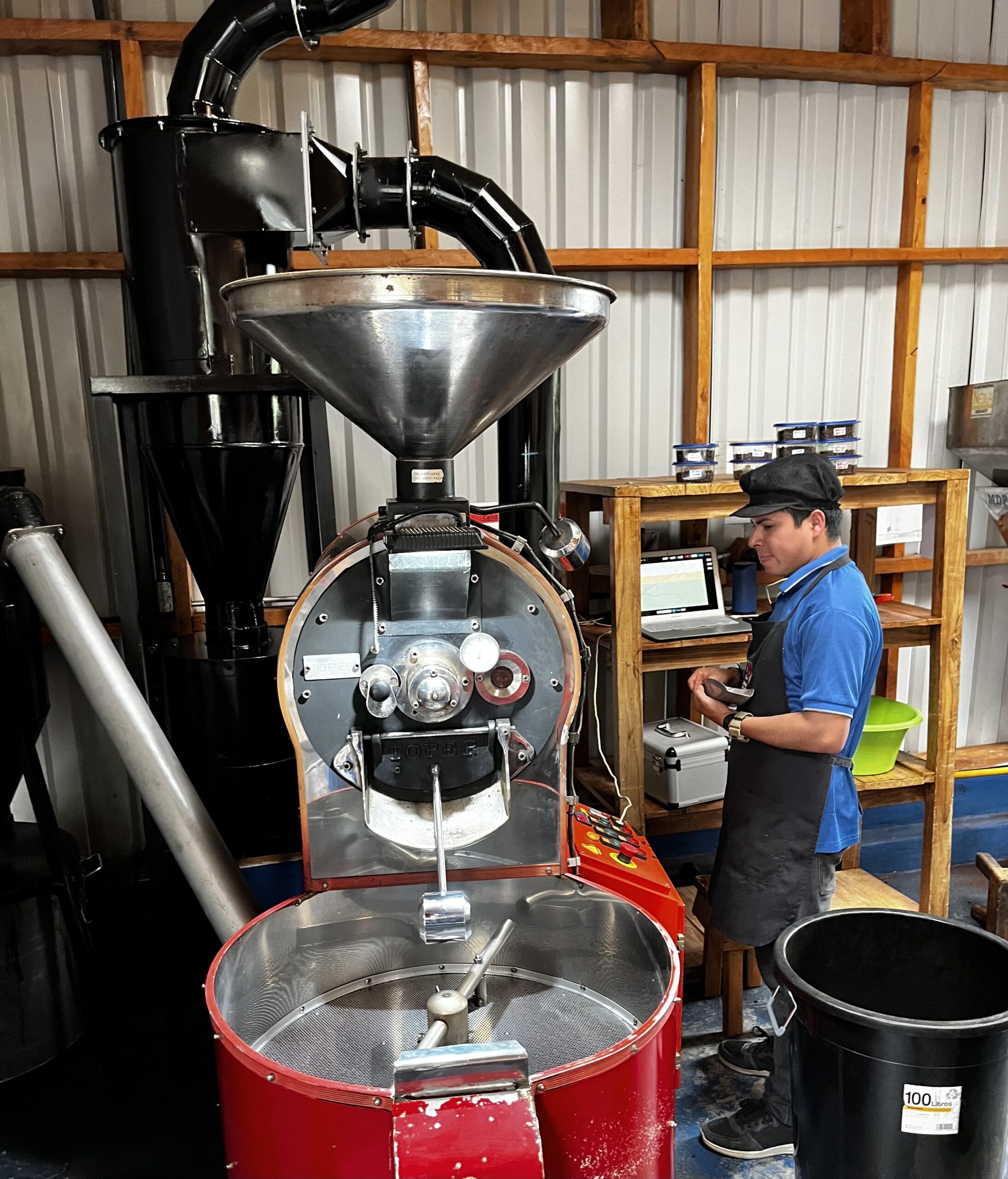While writing this post at 5pm, I am watching the mist slowly rolling up the valley giving the lush landscape a wonderful, mystical rain-forest atmosphere. The temperature does though drop to around 15 degrees centigrade with a humidity around 90%. It is better to appreciate the beauty of the scenery and to ignore the cold creeping up around my feet.
Coffee plants love this climate, so the cool nights here in Tarrazu are a fact of life.
Today’s topic is Café La Cumbre near San Marcos, one of the largest beneficios in Tarruzu producing around 5000 fanegas per year, 4000 for the local market and 1000 specialty coffee for export.
Just as a reminder, one fanega represents around 250 kilograms of coffee cherries or the equivalent of 46 kilograms of green beans. One quintal represents 46 Kilograms of green beans. Or simply: one fanega is the equivalent of one quintal of 46 kilograms of green beans or around 38 Kilograms of beans ready for export. Don’t take this quantities too exactly, and remember they are specific to coffee in Costa Rica. The net weights will of course vary. Sometimes weights are given in pounds which can be confusing when the units are not given. However this traditional method is a clever way of agreeing volumes and prices with growers and customers.
This post is getting a little too long so let’s return to the tasting I shared at La Cumbre.

We compared the three products processed and roasted for the home market as natural, red and yellow honey under the guidance of Nicol Monge Jiminez. Not all beneficios do their own roasting, but it is becoming more popular with the younger generation. My favourite was the natural, but I was outnumbered and red honey, pictured above, won. Though the products may not be specialty coffee I found them of high quality each with a clear individual taste much above that which may usually be expected to be sold through retail stores. My next visit will be during the harvest, “coming soon”
This is part of an ongoing series exploring coffee fincas and their approaches to production, innovation, and sustainability in the face of changing times
